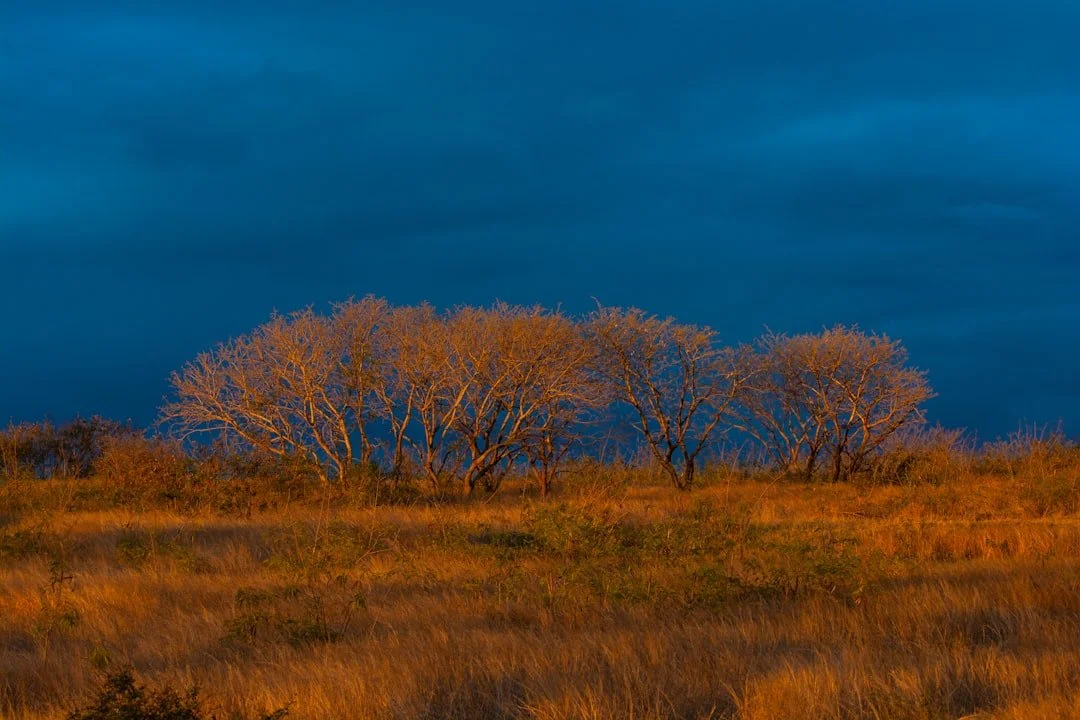Unbowed and Generative: Wangarĩ Maathai’s Radical Approach to Leadership That Outlasts Power
In the mid-1970s, the ecology—and the economy—of Kenya were being devastated by deforestation. The lush green landscape was vanishing. The land was eroding, and rivers were drying up. This meant people struggled to survive—especially women.
When trees disappear, firewood becomes scarce. When firewood is scarce, women spend hours searching for it instead of working, learning, or resting.
It also meant that women were alone in the woods. We’ve all seen the “bear or man” meme on the Internet. The problem here wasn’t bears.
The deforestation crisis in Kenya touched everything.
Wangarĩ Maathai saw this devastation. But more importantly, she saw what could be done.
She didn’t wait for permission.
She didn’t draft a memo.
She didn’t beg the government for intervention.
She picked up a seedling and planted it.
That single act changed everything.
A single tree turned into 50 million trees. That one act became the Green Belt Movement, empowering thousands of Kenyan women to restore forests. The movement didn’t just help the environment—it helped women reclaim their autonomy and, ultimately, fight for democracy. Here, the entire nation of Kenya was the winner.
Wangarĩ Maathai won a Nobel Peace Prize.
She is also a shining example of Generative Leadership.
Not commanding. Not waiting. Creating.
Wangarĩ Maathai teaches us about a new sort of leadership—one the world needs.
We have no shortage of people in power, yet somehow, we have a shortage of actual leadership.
You don’t need a Ph.D. in organizational psychology to know that most leadership models aren’t working. Just look around:
📌 People continue quitting jobs in record numbers.
📌 Trust in institutions is at an all-time low.
📌 The gap between those in power and those they serve is widening.
A recent Gallup study found that 70% of employees feel disengaged at work. When asked why, the top reason wasn’t salary or workload. It was poor leadership.
Here’s the hard truth:
Most people don’t leave bad jobs. They leave bad leaders.
We’ve been drinking from a poisoned well.
In my 30 years of leadership development (particularly with my background in church leadership), I’ve mostly seen leadership taught as a top-down exercise in control—managing, measuring, maximizing efficiency. Leaders are expected to be the smartest, the most authoritative, the ones with all the answers.
The best and most effective leaders don’t have all the answers.
The best and most effective leaders create space for new possibilities.
Leaders like Wangarĩ Maathai.
Generative Leadership Lessons from Wangarĩ Maathai
“As I swept the last bit of dust, I made a covenant with myself: I will accept. Whatever will be, will be. I have a life to lead. I recalled words a friend had told me, the philosophy of her faith. ‘Life is a journey and a struggle,’ she had said. ‘We cannot control it, but we can make the best of any situation.’ I was indeed in quite a situation. It was up to me to make the best of it.”
— Wangarĩ Maathai, Unbowed
🌱 Lesson #1: Leadership is About Creating, Not Controlling
When Maathai saw Kenya’s forests disappearing, she didn’t draft a five-year strategic plan or wait for government approval.
She picked up a shovel. Then led others to do the same.
The first lesson in generative leadership is this:
Create, Don’t Control.
✔ Don’t wait for permission. Act.
✔ Don’t hoard power. Share it.
✔ Don’t dictate solutions. Create conditions where solutions emerge.
Most modern leadership models focus on centralized power—the leader decides, and followers execute. Not so with Maathai.
She did more than plant trees—she planted the idea that ordinary women could be leaders in their own communities.
📖 What the Research Says:
I read these academic papers, so you don’t have to.
Here are a couple of relevant takeaways:
📌 Afridi et al. (2023) found that Generative Leadership fosters creativity, engagement, and commitment.
📌 Castillo (2020) argues that real leadership isn’t about individual influence—it’s about creating self-sustaining systems.
Wangarĩ Maathai wasn’t the leader at the front of the room.
She was the leader who made sure leadership multiplied.
💡 Leadership Reflection: Are you trying to control outcomes, or are you creating conditions where others can thrive?
“There are opportunities even in the most difficult moments.”
— Wangarĩ Maathai, Unbowed
🌍 Lesson #2: Generative Leaders See Possibility Where Others See Crisis
When most people see a problem, they ask: “How do we fix this?”
When generative, visionary leaders see a problem, they ask: “What does this make possible?”
Wangarĩ Maathai saw what others didn’t—that restoring forests wasn’t just about the land. It was about women’s empowerment, democracy, and dignity.
✔ True leaders don’t seek power. They seek to unlock possibility in others.
✔ Companies that innovate don’t just fix problems—they see new opportunities.
✔ Generative leaders don’t just react—they reimagine.
💡 Leadership Reflection: What’s one challenge in your life or work that could become an opportunity if you shifted your perspective?
“The generation that destroys the environment is not the generation that pays the price. That is the problem.”
— Wangarĩ Maathai, Unbowed
🌿 Lesson #3: Generative Leaders Build Systems That Outlast Them
Most leaders focus on immediate results—but Generative Leaders think about legacy.
Maathai’s work outlived her. The Green Belt Movement continues today, decades after her passing.
📖 What the Research Says:
I read these academic papers, so you don’t have to.
Here are two more relevant takeaways:
📌 Karimi et al. (2023) found that transformational leaders who empower others create long-lasting innovation.
📌 Castillo & Trinh (2018) argue that Generative Leadership is about capacity building—creating systems that thrive long after the leader is gone.
Most Leadership Today:
✔ Most leaders hoard knowledge instead of teaching others.
✔ Most organizations fall apart when their founder leaves—because they're built around a single leader, not a sustainable system.
💡 Leadership Reflection: What are you building that will last beyond your leadership?
Wangarĩ Maathai and the Future of Leadership
Read Wangarĩ Maathai’s memoir for more information about her interesting and transformative life
Wangarĩ Maathai didn’t set out to be a powerful leader.
She set out to plant trees.
In doing so, she empowered others and built something bigger than herself.
She embodied everything Generative Leadership is about:
✅ Seeing possibility where others see crisis.
✅ Creating conditions for others to thrive.
✅ Building something that outlasts her influence.
The world doesn’t need more command-and-control leaders.
It needs more leaders like Wangarĩ Maathai.
“Such is oft the course of deeds that move the wheels of the world: small hands do them because they must, while the eyes of the great are elsewhere.”
— Elrond from Tolkien’s The Fellowship of the Ring
💡 What’s one small action you can take today that is generative?
💡 What will you create that outlives you?
I highly recommend reading Maathais’ memoir Unbowed.
For more about her life, her obituary in The Guardian is also quite informative.
Oh — and do remember: You’re doing better than you think.



